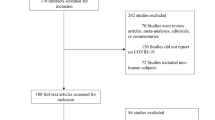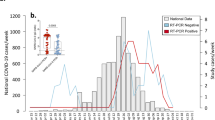Abstract
CXCR6 is a chemokine receptor and the primary coreceptor in SIV infection. A single nucleotide polymorphism 1469G→A, results in a nonconservative change in codon 3 (CXCR6-E3K) of the N-terminus of the coreceptor. To investigate the relation between the chemokine receptor CXCR6 genotype and progression to Pneumocystis carinii pneumonia (PCP) and from PCP to death, we clinically assessed and genotyped 805 individuals from an African-American injection drug-using cohort in Baltimore, MD, USA, for this CXCR6-E3K polymorphism. The allele frequency of CXCR6-3K was high (44%) in African Americans and rare in European Americans (f<1%). Although time to AIDS and PCP was similar for all CXCR6 genotypes, the median survival time from PCP to death for the CXCR6-3E/E and CXCR6-3E/K genotype was 1.5 years compared to 3.1 years for the CXCR6-K/K genotype. Individuals homozygous or heterozygous for the CXCR6-3E allele were 5.6 times more likely to die a PCP-mediated AIDS-related death than were individuals homozygous for CXCR6-3K. This study shows an association between CXCR6 genotype and progression from PCP to death among African-Americans with HIV. We suggest that CXCR6 may play a role in late-stage HIV-1 infection and may alter the progression to death after initial infection with PCP.
This is a preview of subscription content, access via your institution
Access options
Subscribe to this journal
Receive 6 digital issues and online access to articles
$119.00 per year
only $19.83 per issue
Buy this article
- Purchase on Springer Link
- Instant access to full article PDF
Prices may be subject to local taxes which are calculated during checkout

Similar content being viewed by others
Accession codes
References
Michael NL . Host genetic influences on HIV-1 pathogenesis. Curr Opin Immunol 1999; 11: 466–474.
O'Brien SJ, Moore JP . The effect of genetic variation in chemokines and their receptors on HIV transmission and progression to AIDS. Immunol Rev 2000; 177: 99–111.
O'Brien SJ, Nelson GW, Winkler CA, Smith MW . Polygenic and multifactorial disease gene association in man: lessons from AIDS. Annu Rev Genet 2000; 34: 563–591.
Dean M, Carrington M, Winkler C et al. Genetic restriction of HIV-1 infection and progression to AIDS by a deletion allele of the CKR5 structural gene. Hemophilia Growth and Development Study, Multicenter AIDS Cohort Study, Multicenter Hemophilia Cohort Study, San Francisco City Cohort, ALIVE Study. Science 1996; 273: 1856–1862.
Smith MW, Dean M, Carrington M et al. Contrasting genetic influence of CCR2 and CCR5 variants on HIV-1 infection and disease progression. Hemophilia Growth and Development Study (HGDS), Multicenter AIDS Cohort Study (MACS), Multicenter Hemophilia Cohort Study (MHCS), San Francisco City Cohort (SFCC), ALIVE Study. Science 1997; 277: 959–965.
Winkler C, Modi W, Smith MW et al. Genetic restriction of AIDS pathogenesis by an SDF-1 chemokine gene variant. ALIVE Study, Hemophilia Growth and Development Study (HGDS), Multicenter AIDS Cohort Study (MACS), Multicenter Hemophilia Cohort Study (MHCS), San Francisco City Cohort (SFCC). Science 1998; 279: 389–393.
Deng HK, Unutmaz D, Kewalramani VN, Littman DR . Expression cloning of new receptors used by simian and human immunodeficiency viruses. Nature 1997; 388: 296–300.
Liao F, Alkhatib G, Peden KW et al. STRL33, A novel chemokine receptor-like protein, functions as a fusion cofactor for both macrophage-tropic and T cell line-tropic HIV-1. J Exp Med 1997; 185: 2015–2023.
Loetscher M, Amara A, Oberlin E et al. TYMSTR, a putative chemokine receptor selectively expressed in activated T cells, exhibits HIV-1 coreceptor function. Curr Biol 1997; 7: 652–660.
Matloubian M, David A, Engel S, Ryan JE, Cyster JG . A transmembrane CXC chemokine is a ligand for HIV-coreceptor Bonzo. Nat Immunol 2000; 1: 298–304.
Wilbanks A, Zondlo SC, Murphy K et al. Expression cloning of the strl33/bonzo/tymstr ligand reveals elements of cc, cxc, and cx3c chemokines. J Immunol 2001; 166: 5145–5154.
Kim CH, Kunkel EJ, Boisvert J et al. Bonzo/CXCR6 expression defines type 1-polarized T-cell subsets with extralymphoid tissue homing potential. J Clin Invest 2001; 107: 595–601.
Szklo M, Nieto J . Epidemiology: Beyond the Basics, 1st edn. Aspen Publishers: Gaithersburg, 2000.
Shellito JE, Tate C, Ruan S, Kolls J . Murine CD4+ T lymphocyte subsets and host defense against Pneumocystis carinii. J Infect Dis 2000; 181: 2011–2017.
Motsinger A, Haas DW, Stanic AK et al. CD1d-restricted human natural killer T cells are highly susceptible to human immunodeficiency virus 1 infection. J Exp Med 2002; 195: 869–879.
Sharron M, Pohlmann S, Price K et al. Expression and coreceptor activity of STRL33/Bonzo on primary peripheral blood lymphocytes. Blood 2000; 96: 41–49.
Vlahov D, Anthony JC, Munoz A et al. The ALIVE study, a longitudinal study of HIV-1 infection in intravenous drug users: description of methods and characteristics of participants. NIDA Res Monogr 1991; 109: 75–100.
Daugherty BL, Springer MS . The beta-chemokine receptor genes CCR1 (CMKBR1), CCR2 (CMKBR2), and CCR3 (CMKBR3) cluster within 285 kb on human chromosome 3p21. Genomics 1997; 41: 294–295.
1987 revision of the Center for Disease Control/World Health Organization definition of cases of acquired immunodeficiency syndrome (AIDS). Bol Oficina Sanit Panam 1988; 104: 277–286.
1993 revised classification system for HIV infection and expanded surveillance case definition for AIDS among adolescents and adults. MMWR Morb Mortal Wkly Rep 1992; 41: 1–19.
Vlahov D, Graham N, Hoover D et al. Prognostic indicators for AIDS and infectious disease death in HIV- infected injection drug users: plasma viral load and CD4+ cell count. JAMA 1998; 279: 35–40.
DHHS/Henry J Kaiser Family Foundation Panel on Clinical Practices for the Treatment of HIV infection. Guidelines for the Use of Antiretroviral Agents in HIV-Infected adults and adolescents. MMWR Recomm Rep 2002 May 17; 51(RR-7): 1–55.
Author information
Authors and Affiliations
Rights and permissions
About this article
Cite this article
Duggal, P., An, P., Beaty, T. et al. Genetic influence of CXCR6 chemokine receptor alleles on PCP-mediated AIDS progression among African Americans. Genes Immun 4, 245–250 (2003). https://doi.org/10.1038/sj.gene.6363950
Received:
Revised:
Accepted:
Published:
Issue Date:
DOI: https://doi.org/10.1038/sj.gene.6363950
Keywords
This article is cited by
-
Association of 3p21.31 Locus (CXCR6 and LZTFL1) with COVID-19 Outcomes in Brazilian Hospitalyzed Subjects
Current Microbiology (2023)
-
Evidence for selection at HIV host susceptibility genes in a West Central African human population
BMC Evolutionary Biology (2012)
-
Natural killer cell memory
Nature Immunology (2011)
-
Gene-expression profiling of HIV-1 infection and perinatal transmission in Botswana
Genes & Immunity (2006)
-
Human genes that limit AIDS
Nature Genetics (2004)



